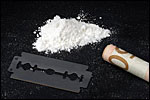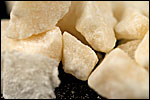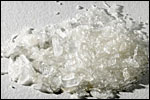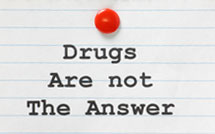 Get Help Now
Get Help Now

For many people, the term “drug” tends to suggest illegal activity although alcohol and tobacco are the drugs that young people are most likely to try, and cannabis (pot) is the most widely used illegal drug in Canada.
Efforts to address crime associated with illegal drugs in Canada have led to the creation of the National Anti-Drug Strategy, launched in 2007. This strategy involves a collaborative approach among multiple government departments and community stakeholder groups and includes three action plans: prevention, treatment and law enforcement. As part of the enforcement plan, mandatory minimum sentencing legislation for certain serious drug offences has been introduced. Below you can find information on some of the most commonly used (abused) drugs in Canada today.

Alcohol
In general usage, alcohol refers almost always to ethanol, also known as grain alcohol, and often to any beverage that contains ethanol. This sense underlies the term alcoholism (addiction to alcohol). Other forms of alcohol are usually described with a clarifying adjective, as in isopropyl alcohol or by the suffix -ol, as in isopropanol. As a drug, common alcohol (ethanol) is known to have a depressing effect that decreases the responses of the central nervous system.
Alcoholism is a term with multiple and sometimes conflicting definitions. In common and historic usage, alcoholism refers to any condition that results in the continued consumption of alcoholic beverages, despite health problems and negative social consequences. While the ingestion of alcohol is, by definition, necessary to develop alcoholism, the use of alcohol does not predict the development of alcoholism. The quantity, frequency and regularity of alcohol consumption required to develop alcoholism varies greatly from person to person.

Cannabis
Cannabis is a type of flowering plant that includes one or more species. The plant is believed to have originated in the mountainous regions just north of the Himalayas in India. It is also known as hemp, although this term usually refers to cannabis cultivated for non-drug use. As a drug it usually comes in the form of dried flowers (marijuana), resin (hashish), or various extracts collectively referred to as hash oil.
The consumption of Cannabis smoke is found long ago as the 3rd millennium BC.[4] In modery times, the drug has been used for recreational, religious or spiritual, and medicinal purposes. It is estimated that about four percent of the world’s adult population (162 million) use cannabis annually and about 0.6 percent (22.5 million) daily.[5] The possession, use, or sale of psychoactive Cannabis products became illegal in most parts of the world in the early 20th century. Some countries have intensified the enforcement of cannabis prohibition while others have reduced the priority of enforcement.

Cocaine
Cocaine is a crystalline tropane alkaloid that is obtained from the leaves of the coca plant. It is a stimulant of the central nervous system and an appetite suppressant, creating a euphoric sense of happiness and increased energy. Cocaine is an addictive substance, and its possession, cultivation, and distribution is illegal for non-medicinal and non-government sanctioned purposes in virtually most of the world. Cocaine in its purest form is an off-white or pink chunky product. Cocaine appearing in powder form is a salt, typically cocaine hydrochloride.
Its possession, cultivation, and distribution are illegal for non-medicinal and non-government sanctioned purposes in virtually all parts of the world. Although its free commercialization is illegal and has been severely penalized in virtually all countries, its use worldwide remains widespread in many social, cultural, and personal settings.

Crack Cocaine
Crack cocaine, crack or rock is a solid, smokable form of cocaine. It is a freebase form of cocaine that can be made using baking soda. The color of “crack” cocaine depends upon the origin of the cocaine used, the method of preparation with ammonia or sodium bicarbonate, and the presence of impurities, but will generally range from a light brown to a pale brown. Its texture will also depend on the factors which affect color, but will range from a crumbly texture, which is usually the lighter variety, to hard, almost crystalline nature, which is usually the darker variety.
Because crack is not a regulated medicine, the actual content varies widely, including many chemicals from crude processing or added to blow up the size of the cooked crack or volume of the initial powdered cocaine. Crack cocaine is usually purchased in rock form already, although it is not uncommon for some users to “wash up” or “cook” the cocaine into crack themselves. Crack cocaine is a substance that affects the brain chemistry of the user: causing euphoria,supreme confidence, loss of appetite, insomnia, alertness, increased energy, a craving for more cocaine and potential paranoia.

Crystal Meth – Methamphetamine
Methamphetamin is an amphetamine derivative (trade name Methedrine) used in the form of a crystalline hydrochloride; used as a stimulant to the nervous system and as an appetite suppressant and is also used to treat narcolepsy and some forms of depression. Meth, a shockingly common drug among teens and young adults these days. The language used amongst meth users is often covert in common terminology. Buyers and sellers are wise to use language that disguises intent. There are many reasons why an addict is drawn to the easily produced drug called meth.
The street drug known as “crystal meth” is considered the fastest growing and most serious drug problem facing Canadian teens today. One of the reasons crystal meth has become so popular, is it can be produced by combining a specific set of chemicals, all of which can be obtained legally.
Methamphetamine enters the brain and triggers a cascading release of dopamine, serotonin and norepinephrine. It is highly active in the mesolimbic reward pathways of the brain, inducing intense euphoria, with risk for addiction.
To a lesser extent, methamphetamine acts as a dopaminergic and adrenergic reuptake inhibitor with high concentrations serving as a monoamine oxidase inhibitor. Users may become hypersexual or obsessed with a task, thought or activity. Withdrawal is characterized by excessive sleeping, eating, and major depression, often accompanied by anxiety and drug-craving.[2] Methamphetamine users may take sedatives such as benzodiazepines as a means of easing their “come down”, anxiety or enable them to sleep.

Ecstacy – MDMA
MDMA (3,4-methylenedioxymethamphetamine; commonly known as Ecstasy, E, X, and XTC, as well as by Molly in its pure crystalline, powder, or capsule form, and as Adam and Empathy in the past) is a psychoactive drug and semisynthetic member of the phenethylamine and amphetamine chemical classes. Based on the effects it produces, MDMA is classified as a stimulant, hallucinogen, and psychedelic, as well as, and most importantly, an empathogen-entactogen.
MDMA is considered unusual for its tendency to produce a sense of intimacy with others and diminished feelings of fear and anxiety. These effects have led some to suggest it might have therapeutic benefits in certain individuals. Before it was made a controlled substance, MDMA was used as an augmentation to psychotherapy, often couples therapy, and to help treat clinical depression as well as anxiety disorders, the results of which are poorly documented.
MDMA is criminalized in most countries in the world under a United Nations (U.N.) agreement,[3] and its possession, manufacture, or sale may result in criminal prosecution, although some limited exceptions exist for scientific and medical research. MDMA is one of the most widely recreationally used illicit drugs in the world[4] and is taken in a variety of contexts far removed from its roots in psychotherapeutic settings. It is commonly associated with the rave or electronica subculture and related genres of music.

Heroin
Heroin, or diacetylmorphine (INN), also known as diamorphine (BAN), is a semi-synthetic opioid drug synthesized from morphine, a derivative of the opium poppy. It is the 3,6-diacetyl ester of morphine (hence diacetylmorphine). The white crystalline form is commonly the hydrochloride salt diacetylmorphine hydrochloride, however heroin freebase may also appear as a white powder. As with other opioids, heroin is used as both a pain-killer and a recreational drug and has high potential for abuse.
Frequent and regular administration is associated with tolerance, moderate physical dependence, and severe psychological dependence which often develops into addiction. Heroin has been proven to act as an extraordinary fever reducer.
Internationally, heroin is controlled under Schedules I and IV of the Single Convention on Narcotic Drugs. It is illegal to manufacture, possess, or sell diacetylmorphine without a licence in Belgium, Denmark, Germany, Iran, India, the Netherlands, the United States, Australia, Canada, Ireland, Pakistan, the United Kingdom and Swaziland. Under the name diamorphine, it is a legally prescribed controlled drug in the United Kingdom. In the Netherlands, under the name diacetylmorphine, it is available for prescription to long-term addicts.
Thank you for you interest in our FREE drug and alcohol treatment referral service in Canada. This website is solely designed to help the addict find appropriate treatment and treatment centres in dealing with his or her addiction to drugs or alcohol.
We do not have any affiliation with any religious organizations or any outside paid or unpaid source.
Canadian Drug Rehab drug rehab referral service does not accept or host any advertisement.


